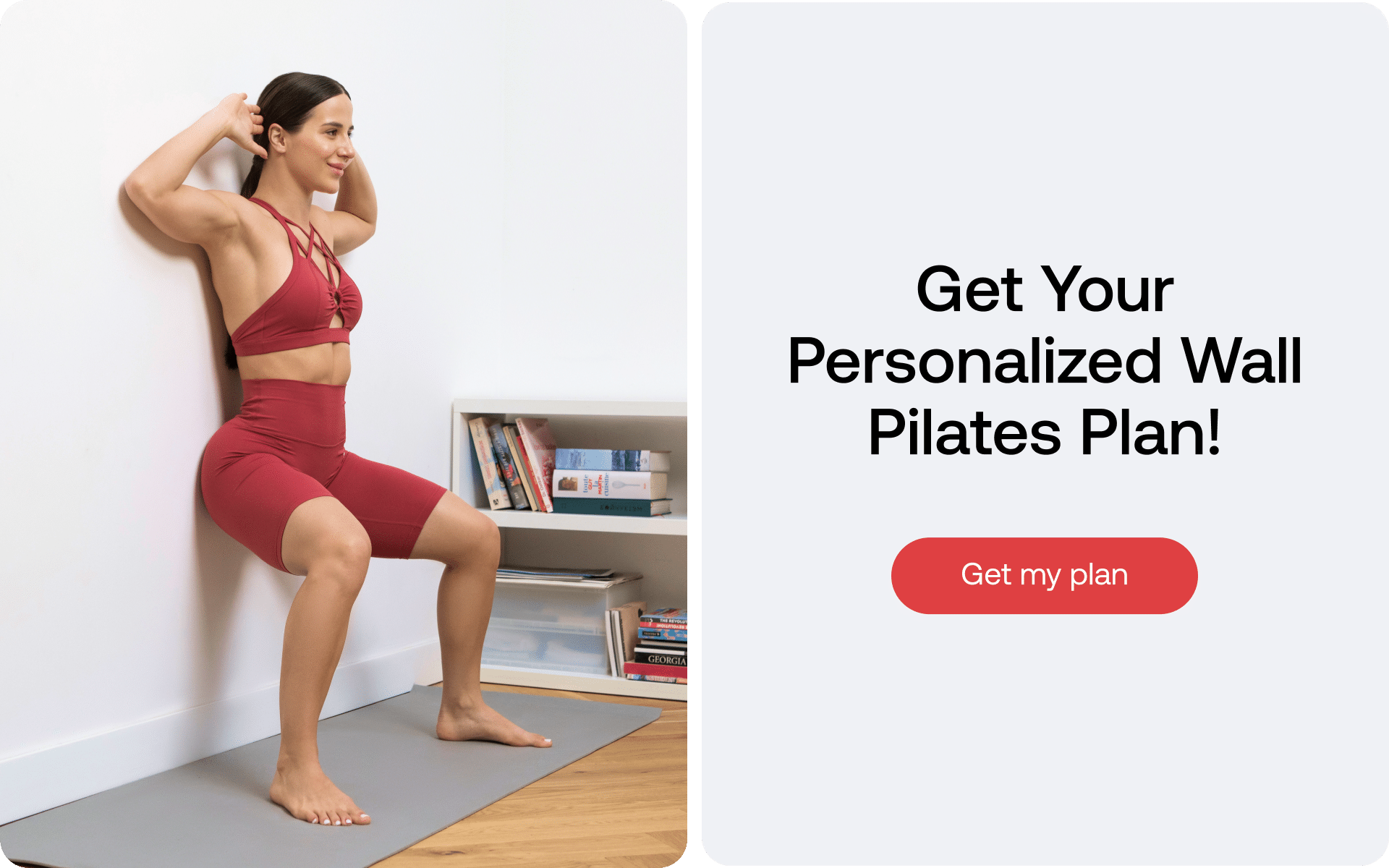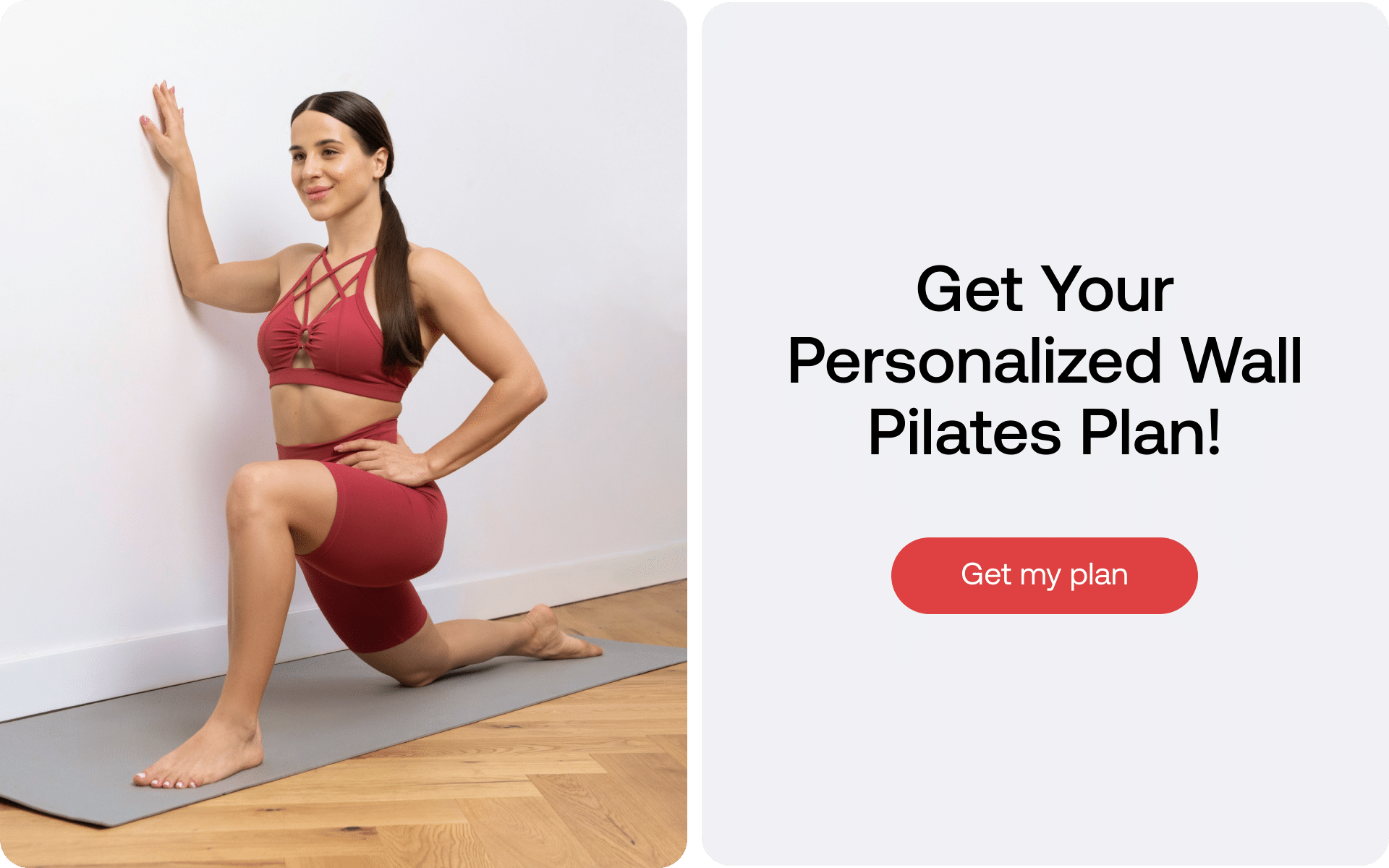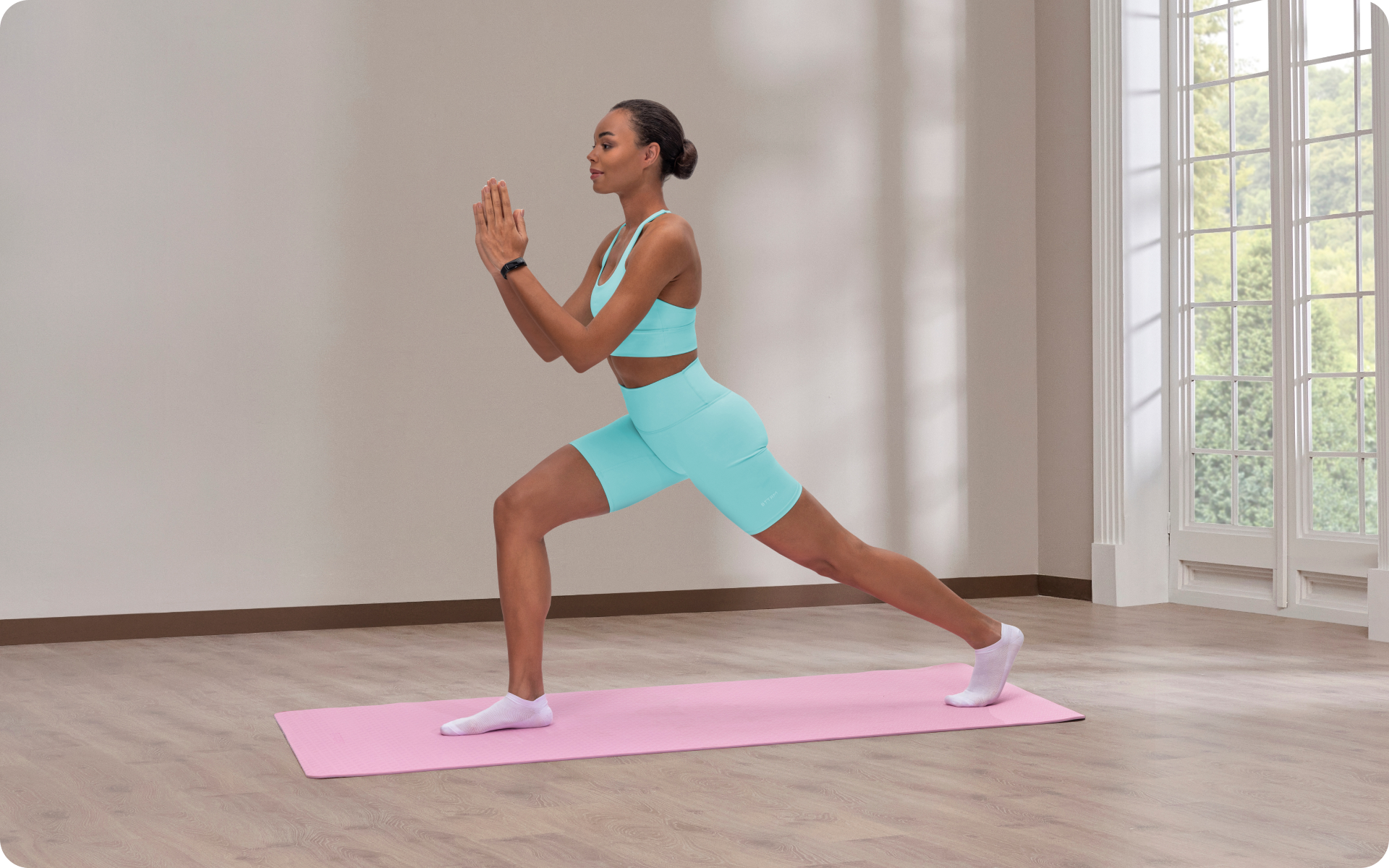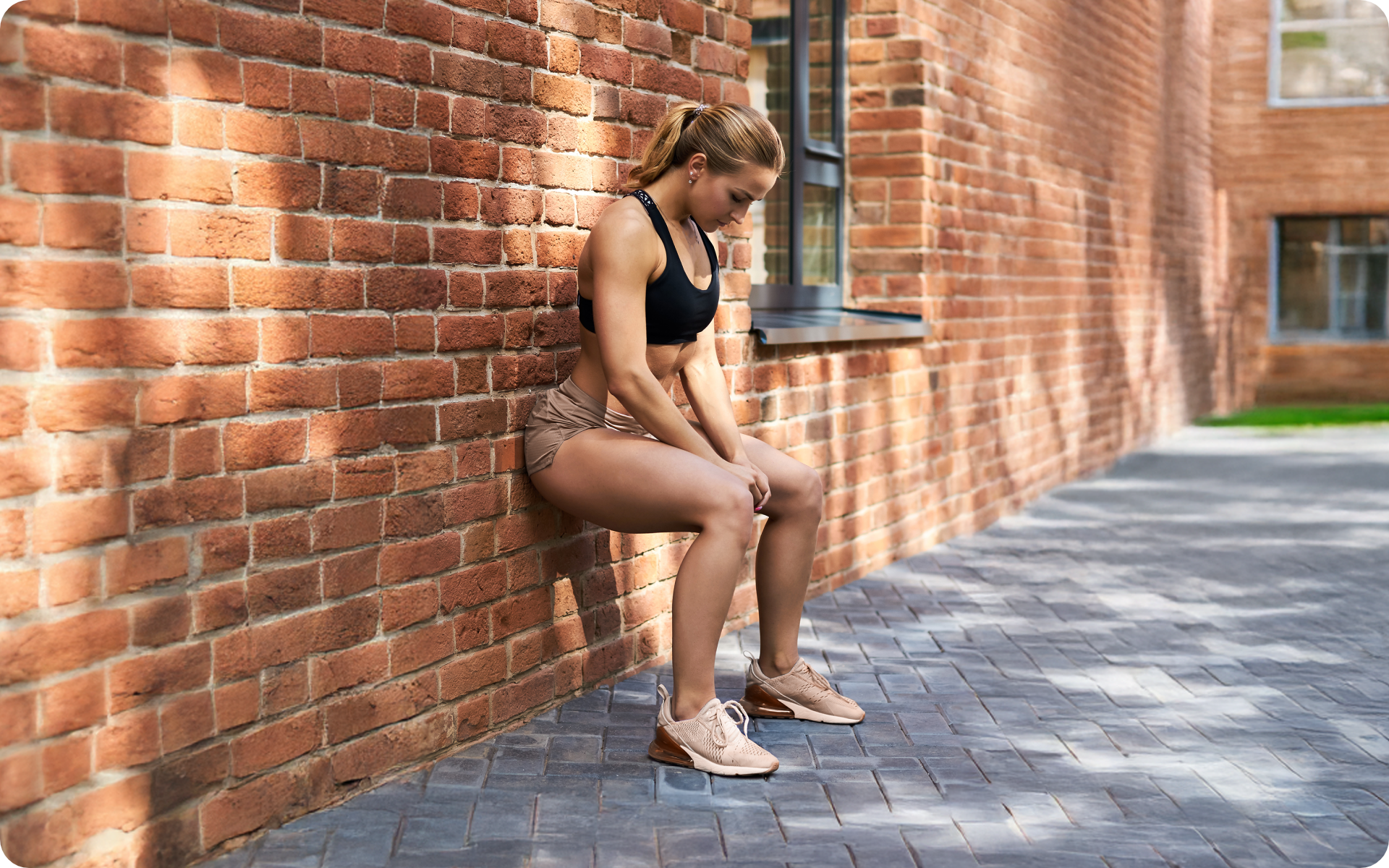If you’re looking to improve your upper body strength but aren’t quite ready for traditional pushups, wall pushups are an excellent starting point. This beginner-friendly exercise is a fantastic way to ease into strength training and build the foundation needed for more advanced workouts in the future. In this post, we’ll dive into the significance of wall pushups, discuss their benefits, and provide step-by-step instructions to help you master this effective exercise. We’ll also explore some variations you can use to keep your wall pushups routine fresh and exciting.
What Are Wall Pushups?
Wall pushups are a modified version of the classic pushup exercise, designed to reduce the amount of pressure on your wrists, shoulders, and lower back.
This alternative form of pushup is performed standing up against a wall, making it an ideal choice for beginners, individuals recovering from injuries, or those who find traditional pushups too challenging (3).
Unlike regular pushups, where you support your body weight on your hands and toes while lying face-down on the ground, wall pushups are done in a standing position.
You place your hands on a wall at shoulder height and width apart, then bend your elbows to bring your chest towards the wall before pushing back to the starting position.
This technique significantly reduces the intensity of the exercise, as you’re not supporting your entire body weight.
Wall pushups are best suited for those who are new to strength training or have limited upper body strength (4). They help build foundational muscle strength in the arms, shoulders, and chest, which is essential for progressing to more challenging exercises like regular pushups or other variations.
Additionally, wall pushups are an excellent option for people with joint issues, as the vertical angle places less stress on the wrists and shoulders compared to traditional pushups.
Read More: Push Ups Vs. Bench Press: Which Workout Is Better For Maximum Gains?

Do Wall Push Ups Work The Same Muscles As Regular Pushups?
Wall pushups and regular pushups both target the same primary muscle groups, although the intensity and engagement of these muscles differ due to the variations in body position and weight distribution. Here’s a detailed breakdown of the muscle groups worked by both types of pushups:
1. Chest Muscles (Pectoralis Major And Minor)
Both wall pushups and regular pushups engage your chest muscles as you push your body away from the wall or floor. However, regular pushups demand more effort from your chest muscles due to the horizontal positioning and increased body weight resistance.
2. Shoulder Muscles (Deltoids)
The anterior deltoid muscles in your shoulders are active during both exercises. Wall pushups place less stress on the shoulders compared to regular pushups, making them a safer option for individuals with shoulder issues.
3. Tricep Muscles
The triceps are responsible for extending your elbows during the pushup movement. Both types of pushups work the triceps, but regular pushups provide a greater challenge due to the added body weight resistance.
4. Core Muscles (Abdominals, Obliques, And Lower Back)
Regular pushups engage your core muscles more intensively than wall pushups, as you need to maintain a straight body alignment throughout the exercise.
While Wall Pushups still require some core engagement for stability, the standing position reduces the demand on these muscles.
Looking for a way to break the vicious cycle of weight loss and tone up all the jiggly parts? Watch the extra pounds fly off and your muscles firm up with the BetterMe app!

Do Wall Push Ups Work Any Muscles That Regular Pushups Don’t?
Wall Pushups and regular pushups mainly target the same primary muscle groups, which include the chest, shoulders, triceps, and core.
However, due to the difference in body positioning and weight distribution, some secondary muscles may be engaged differently between the two exercises.
Note that these differences are subtle, and the overall muscle activation remains largely the same for both types of pushups.
In Wall Pushups, the standing position and vertical angle of the body might engage the following muscles to a slightly different extent compared to regular pushups:
1. Lower Trapezius Muscles
These muscles, located in your upper back, help stabilize your shoulder blades during Wall Pushups. While they are also engaged in regular pushups, the vertical angle of Wall Pushups might place a slightly different demand on these muscles.
2. Lower Leg Muscles (Calves And Ankles)
During Wall Pushups, you use your lower leg muscles for balance and stability as you lean against the wall. In regular pushups, the primary focus of your lower body is on maintaining a straight alignment, so the engagement of these muscles differs between the two exercises.
Read More: Pushups For Lower Chest You Can Easily Do At Home
Are Wall Pushups Effective?
Yes, Wall Pushups are effective, especially for beginners and individuals with limited strength or mobility. They provide several benefits as a low-impact alternative to regular pushups (1). Here are some key advantages of incorporating Wall Pushups into your exercise routine:
1. Builds Foundational Strength
Wall Pushups help develop upper body strength in the chest, shoulders, and triceps – essential muscle groups for performing more advanced exercises like regular pushups and other variations.
2. Improves Muscular Endurance
As a low-impact exercise, Wall Pushups allow you to perform more repetitions, which can help improve your muscular endurance over time (2).
3. Supports Injury Recovery And Prevention
Due to the reduced stress on joints and muscles, wall pushups are an excellent option for individuals recovering from injuries or those with joint issues, such as wrist or shoulder problems.
4. Enhances Core Stability
While the core engagement is less intense than in regular pushups, Wall Pushups still require some level of core activation to maintain stability during the movement, helping you develop core strength and stability.
5. Adaptable To Different Fitness Levels
Wall Pushups can be easily modified to suit various fitness levels by adjusting the angle between your body and the wall. The closer you stand to the wall, the easier the exercise becomes, while moving further away increases the difficulty.
6. Suitable For Home Workouts
Wall Pushups require no special equipment and can be performed anywhere with a sturdy wall, making them an ideal addition to home workout routines.
If you tend to let yourself off the hook, raise the white flag when things get tougher than you expected, send yourself on an unconscious binge-eating trip – BetterMe app is here to help you leave all of these sabotaging habits in the past!
How To Do Wall Pushups
To perform Wall Pushups correctly and effectively, follow these detailed step-by-step instructions:
- Find a sturdy wall:
Choose a solid, flat wall with enough space for you to extend your arms comfortably. Avoid using doors or any surface that could move or be unstable.
- Position your body:
Stand facing the wall, about 1-2 feet (30-60 cm) away from it. Adjust this distance according to your fitness level – standing closer to the wall makes the exercise easier, while moving further away increases the difficulty. Find a position that is a comfortable starting point, then adjust to increase the difficulty as you progress.
- Place your hands on the wall:
Extend your arms and place your palms on the wall at shoulder height and slightly wider than shoulder-width apart. Your fingers should be pointing upwards.
- Set your feet:
Position your feet hip-width apart, with your weight evenly distributed between the balls of your feet and your heels. The further away your feet are from the wall, the more challenging the exercise will be.
- Engage your core:
Before starting the movement, tighten your abdominal muscles and maintain a straight posture from your head to your heels. This engagement helps stabilize your body throughout the exercise and ensures loading is also distributed evenly.
- Lower your body towards the wall:
Inhale and brace your core, before you slowly bend your elbows and lean your body towards the wall, keeping your elbows close to your sides. Keep your core engaged and maintain a straight body alignment without arching your lower back. Continue lowering your chest towards the wall until your elbows form a 90-degree angle or as far as you can comfortably go
- Push back to the starting position:
Exhale as you push through your palms, straightening your arms and returning to the initial standing position. Be sure that your body remains straight and engaged throughout this movement.
- Repeat:
Aim to complete 3 sets of 10-15 wall pushups, or as many as you can perform with proper form. As you build strength and endurance, you can gradually increase the number of repetitions or sets. If you are a beginner, you can start with fewer sets or repetitions, at a comfortable level to ensure appropriate progression.
Remember to always listen to your body and maintain proper form throughout the exercise. If you experience any pain or discomfort, stop the exercise immediately and consult a fitness professional or healthcare provider for guidance.

Wall Pushup Variations For A Well-Rounded At Home Workout
There are several Wall Pushup variations that you can incorporate into your routine to target different muscle groups and add variety:
Close-Grip Wall Pushups
Target muscles: Triceps, chest (pectoralis major), and shoulders (deltoids)
How to execute:
- Stand facing the wall, about 1-2 feet (30-60 cm) away from it.
- Place your hands on the wall at shoulder height, with your palms closer together than in a standard Wall Pushup – around 6 to 10 inches apart.
- Position your feet hip-width apart and engage your core.
- Bend your elbows, keeping them close to your body, and lower your chest towards the wall.
- Push back to the starting position by straightening your arms.
- Repeat for the desired number of repetitions and sets.
Wide-Grip Wall Pushup
Target muscles: Chest (pectoralis major), shoulders (deltoids), and triceps
How to execute:
- Stand facing the wall, about 1-2 feet (30-60 cm) away from it.
- Place your hands on the wall, wider than shoulder-width apart, at shoulder height.
- Position your feet hip-width apart and engage your core.
- Bend your elbows out to the sides and lower your chest towards the wall.
- Push back to the starting position by straightening your arms.
- Repeat for the desired number of repetitions and sets.
One-Arm Wall Pushups
Target muscles: Chest (pectoralis major), shoulders (deltoids), triceps, and core muscles (for increased stability)
How to execute:
- Stand facing the wall, about 1-2 feet (30-60 cm) away from it.
- Place one hand on the wall at shoulder height and slightly wider than shoulder-width apart from the center of your chest.
- Position your feet shoulder-width apart and engage your core.
- Bend your elbow, keeping it close to your body, and lower your chest towards the wall.
- Push back to the starting position by straightening your arm.
- Repeat for the desired number of repetitions on one side before switching to the other arm.
Decline Wall Pushups
Target muscles: Upper chest (pectoralis major), shoulders (deltoids), and triceps
How to execute:
- Stand facing the wall, about 1-2 feet (30-60 cm) away from it.
- Place your hands on the wall at a height slightly above your shoulders.
- Position your feet hip-width apart and engage your core.
- Bend your elbows and lower your chest towards the wall, maintaining a straight body alignment.
- Push back to the starting position by straightening your arms.
- Repeat for the desired number of repetitions and sets.
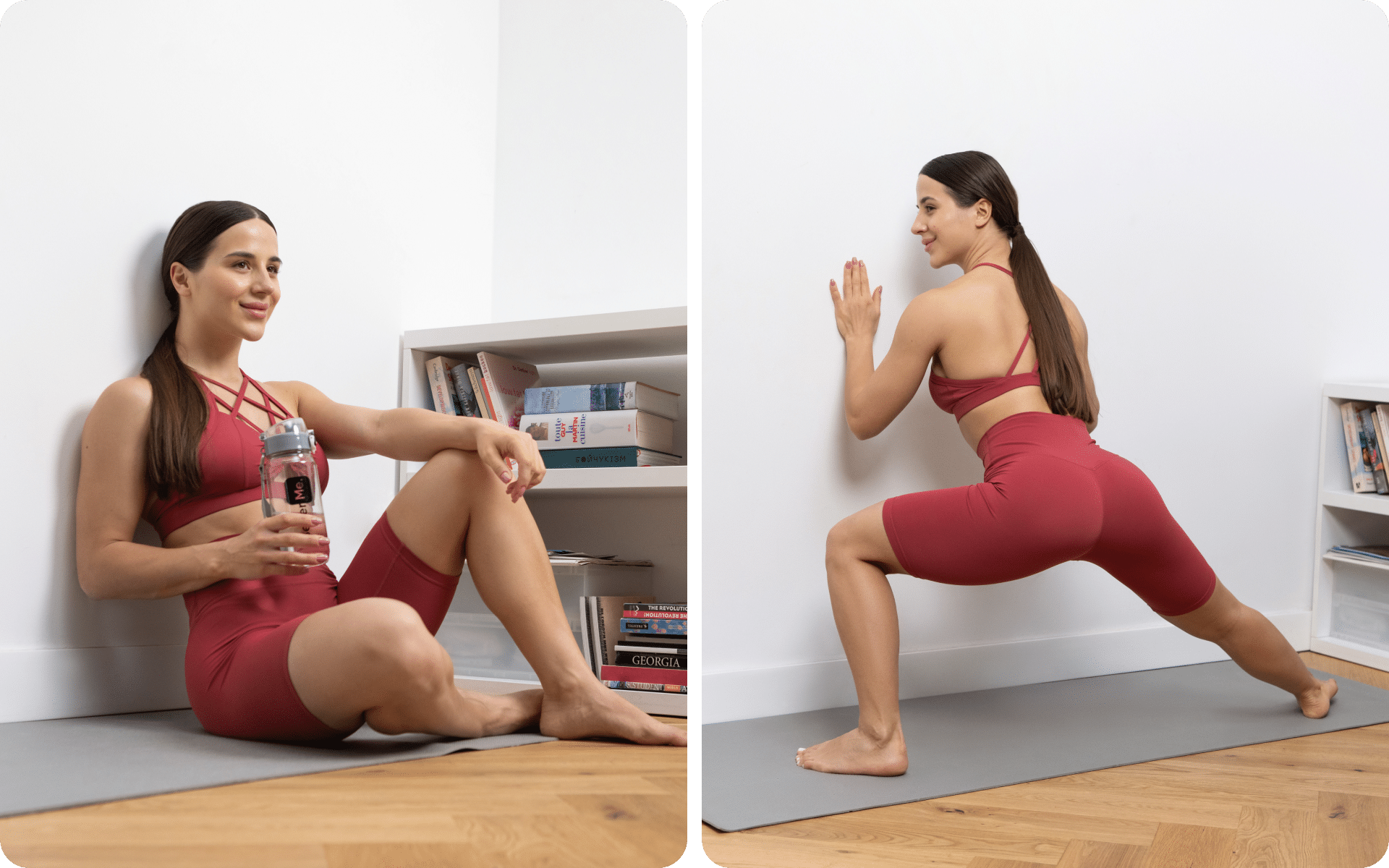
Incline Wall Pushups
Target muscles: Lower chest (pectoralis major), shoulders (deltoids), and triceps
How to execute:
- Stand facing a sturdy, waist-high surface like a countertop or railing.
- Place your hands on the edge of the surface at shoulder-width apart.
- Step back until your body forms a straight line from head to heels, leaning against the surface with your arms fully extended.
- Engage your core and bend your elbows, lowering your chest towards the edge of the surface.
- Push back to the starting position by straightening your arms.
- Repeat for the desired number of repetitions and sets.
Staggered Hand Wall Pushups
Target muscles: Chest (pectoralis major), shoulders (deltoids), triceps, and core muscles (for increased stability)
How to execute:
- Stand facing the wall, about 1-2 feet (30-60 cm) away from it.
- Place one hand on the wall at shoulder height and width, while placing the other hand slightly higher or lower than the first one.
- Position your feet hip-width apart and engage your core.
- Bend your elbows and lower your chest towards the wall.
- Push back to the starting position by straightening your arms.
- Repeat for the desired number of repetitions before switching hand positions.
The Bottom Line
Wall Pushups are an effective, beginner-friendly exercise that helps build foundational upper-body strength and muscular endurance.
They target the same primary muscle groups as regular pushups, including the chest, shoulders, triceps, and core, but with less intensity and stress on the joints.
By incorporating various Wall Pushup variations into your routine, you can target different muscles and add variety to your workouts.
DISCLAIMER:
This article is intended for general informational purposes only and does not serve to address individual circumstances. It is not a substitute for professional advice or help and should not be relied on for making any kind of decision-making. Any action taken as a direct or indirect result of the information in this article is entirely at your own risk and is your sole responsibility.
BetterMe, its content staff, and its medical advisors accept no responsibility for inaccuracies, errors, misstatements, inconsistencies, or omissions and specifically disclaim any liability, loss or risk, personal, professional or otherwise, which may be incurred as a consequence, directly or indirectly, of the use and/or application of any content.
You should always seek the advice of your physician or other qualified health provider with any questions you may have regarding a medical condition or your specific situation. Never disregard professional medical advice or delay seeking it because of BetterMe content. If you suspect or think you may have a medical emergency, call your doctor.
SOURCES:
- How to Do Wall Push-Ups: Basic Technique for Wall Push-Ups (2021, masterclass.com)
- Loading Recommendations for Muscle Strength, Hypertrophy, and Local Endurance: A Re-Examination of the Repetition Continuum (2021, ncbi.nlm.nih.gov)
- Muscle Activation during Push-Ups with Different Suspension Training Systems (2014, ncbi.nlm.nih.gov)
- Push Up Plus Exercise (n.d., physio-pedia.com)


